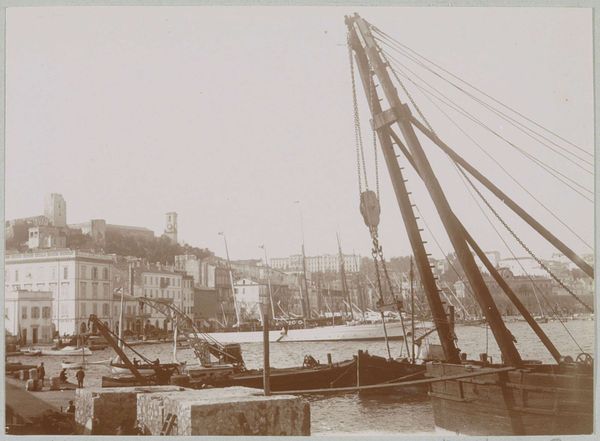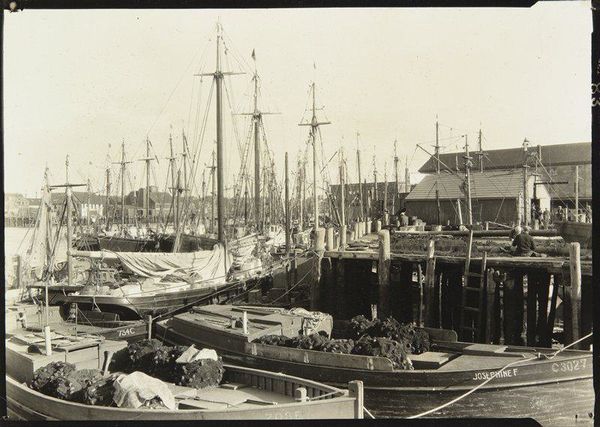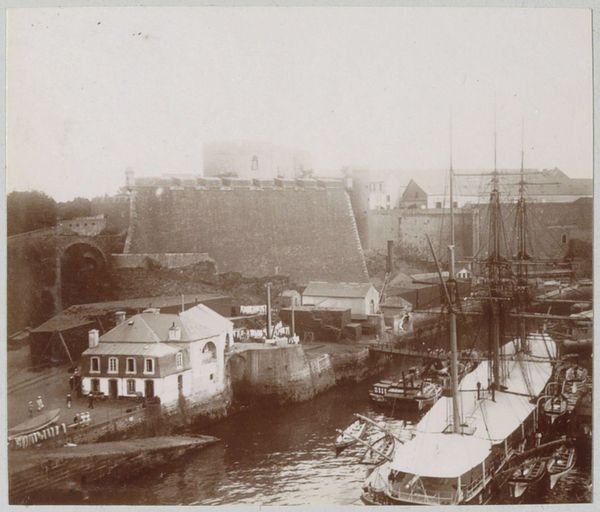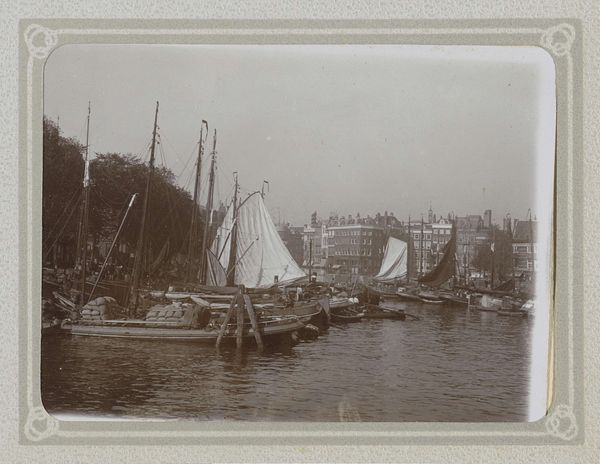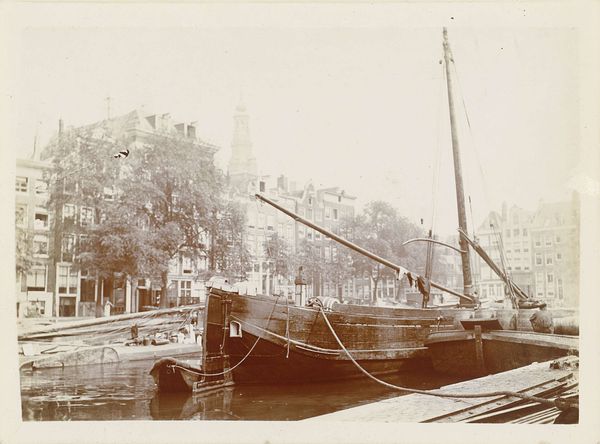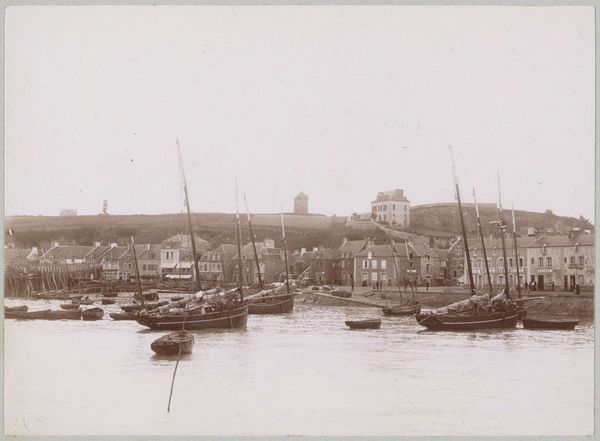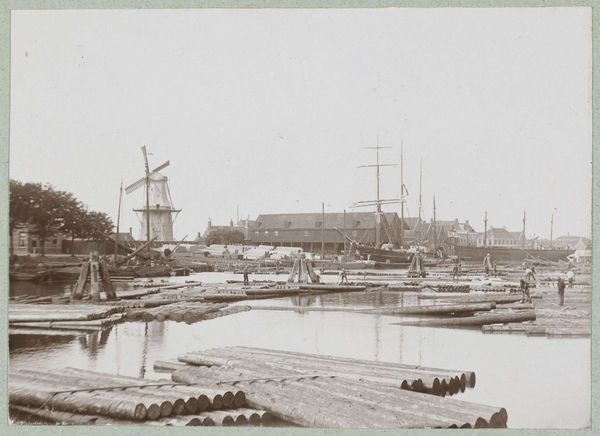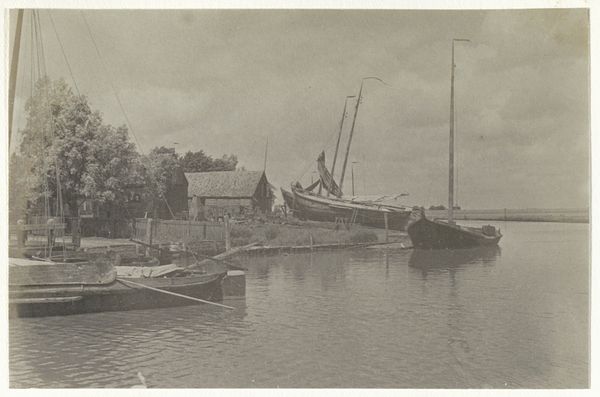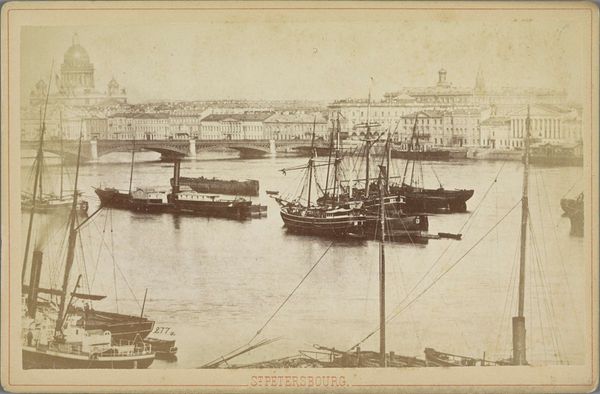
drawing, ink
#
drawing
#
landscape
#
ink
#
cityscape
#
realism
Dimensions: overall: 20.5 x 27.9 cm (8 1/16 x 11 in.)
Copyright: National Gallery of Art: CC0 1.0
Curator: The light in this image is striking, isn't it? It almost makes the water shimmer. Editor: Indeed! I feel an immediate connection to Glasgow's maritime history viewing it. This is "Broomielaw, Glasgow," rendered in ink by David Young Cameron. It looks to be a cityscape that favors utility, focusing on industry more than charm. Curator: Yes, you can see how Cameron uses the ink almost like a wash in some areas, particularly to capture that atmospheric haze over the buildings in the background. What kind of paper do you imagine he was using to achieve this? I think we should look at his material choices closely, that must've influenced this grainy style! Editor: Precisely, Broomielaw was a pivotal location in Glasgow's expansion, serving as the primary port for transatlantic trade. Consider the urban development around this area. It was spurred by this crucial point of global interaction, impacting the movement of raw goods and the very layout of the streets and architecture. Curator: Look closely. Cameron isn’t just depicting ships. He’s carefully constructing a sense of depth through a strategic use of the materials; he controls the gradients of the ink. That dense black smoke stack—he’s signaling something about the working conditions, about labour, and also hinting that industrial activity has literally stained this location! Editor: And consider who this art was originally created for. Was it designed for the working class who labored here or rather the growing merchant class? Its accessibility via print undoubtedly influenced its reception, impacting perspectives of city growth during rapid industrialization. Curator: I think what truly grabs me is how Cameron coaxes us to admire the industrial. See the contrast with that pristine sky that peeks through the forest of masts and chimneys. In an industrialized city he reveals and highlights the materiality that makes it real. Editor: For me, this image connects to the broader history of representation of labour. The romanticization of it, the actual hard conditions and implications of global trade that shaped it—the narrative behind who benefits is so significant in its placement in time and social function. Curator: Considering this discussion, this drawing presents so much: A picture of industry through the careful deployment of material, to Glasgow as a stage for both growth and material challenges! Editor: Exactly, and viewing this piece in context prompts reflection on the legacy and societal implications tied to such a historic locale.
Comments
No comments
Be the first to comment and join the conversation on the ultimate creative platform.
